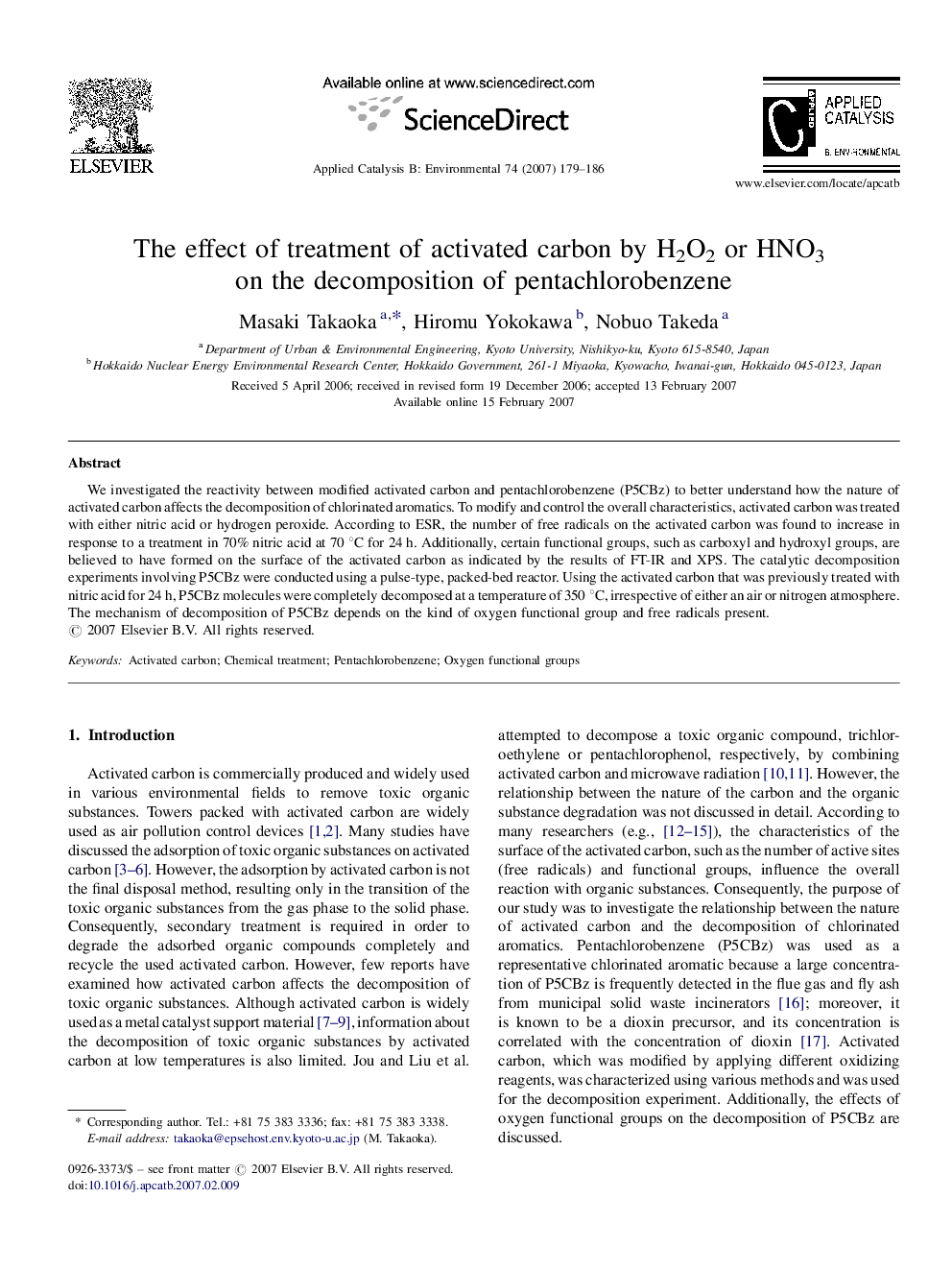| Article ID | Journal | Published Year | Pages | File Type |
|---|---|---|---|---|
| 48587 | Applied Catalysis B: Environmental | 2007 | 8 Pages |
We investigated the reactivity between modified activated carbon and pentachlorobenzene (P5CBz) to better understand how the nature of activated carbon affects the decomposition of chlorinated aromatics. To modify and control the overall characteristics, activated carbon was treated with either nitric acid or hydrogen peroxide. According to ESR, the number of free radicals on the activated carbon was found to increase in response to a treatment in 70% nitric acid at 70 °C for 24 h. Additionally, certain functional groups, such as carboxyl and hydroxyl groups, are believed to have formed on the surface of the activated carbon as indicated by the results of FT-IR and XPS. The catalytic decomposition experiments involving P5CBz were conducted using a pulse-type, packed-bed reactor. Using the activated carbon that was previously treated with nitric acid for 24 h, P5CBz molecules were completely decomposed at a temperature of 350 °C, irrespective of either an air or nitrogen atmosphere. The mechanism of decomposition of P5CBz depends on the kind of oxygen functional group and free radicals present.
